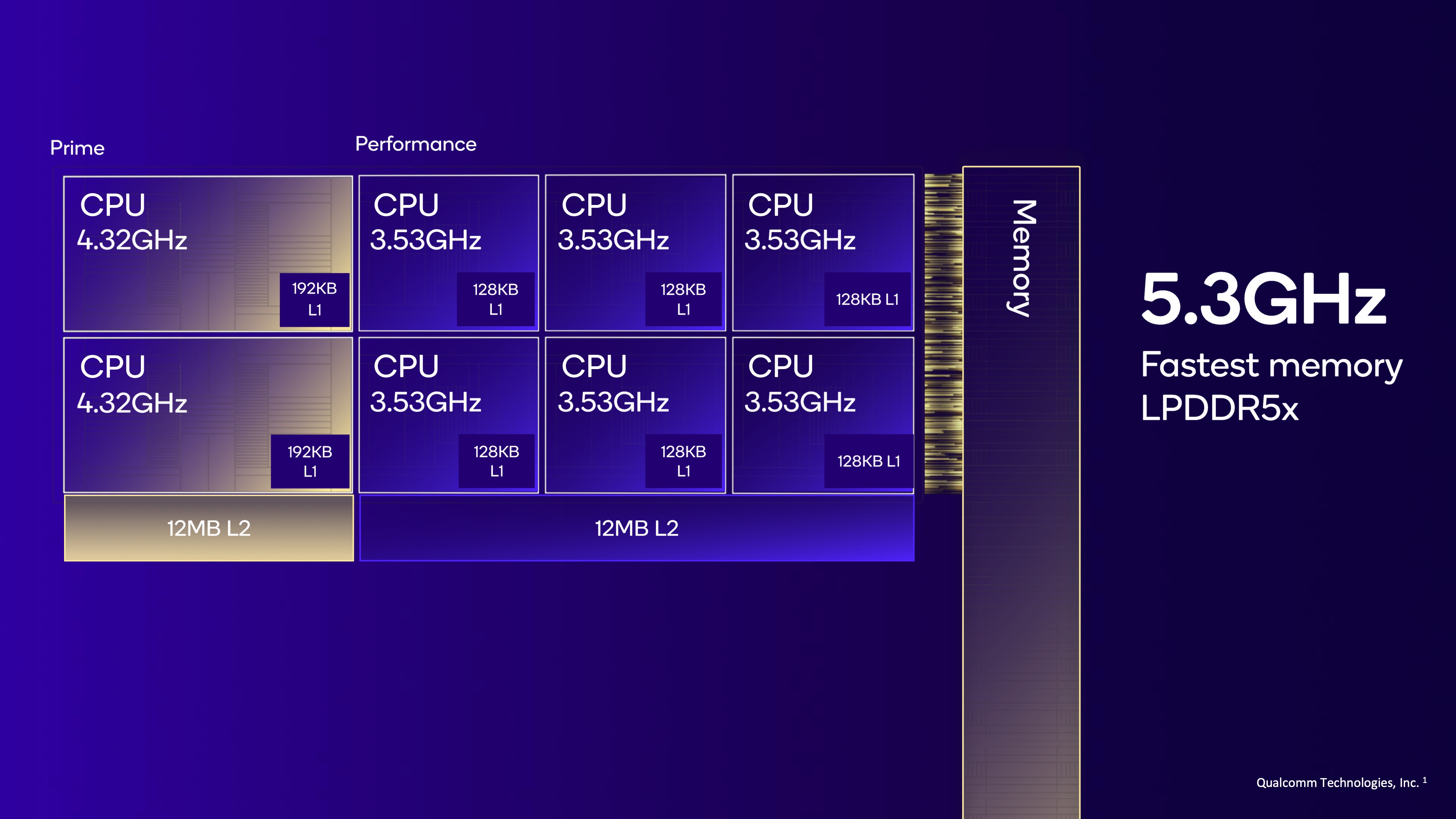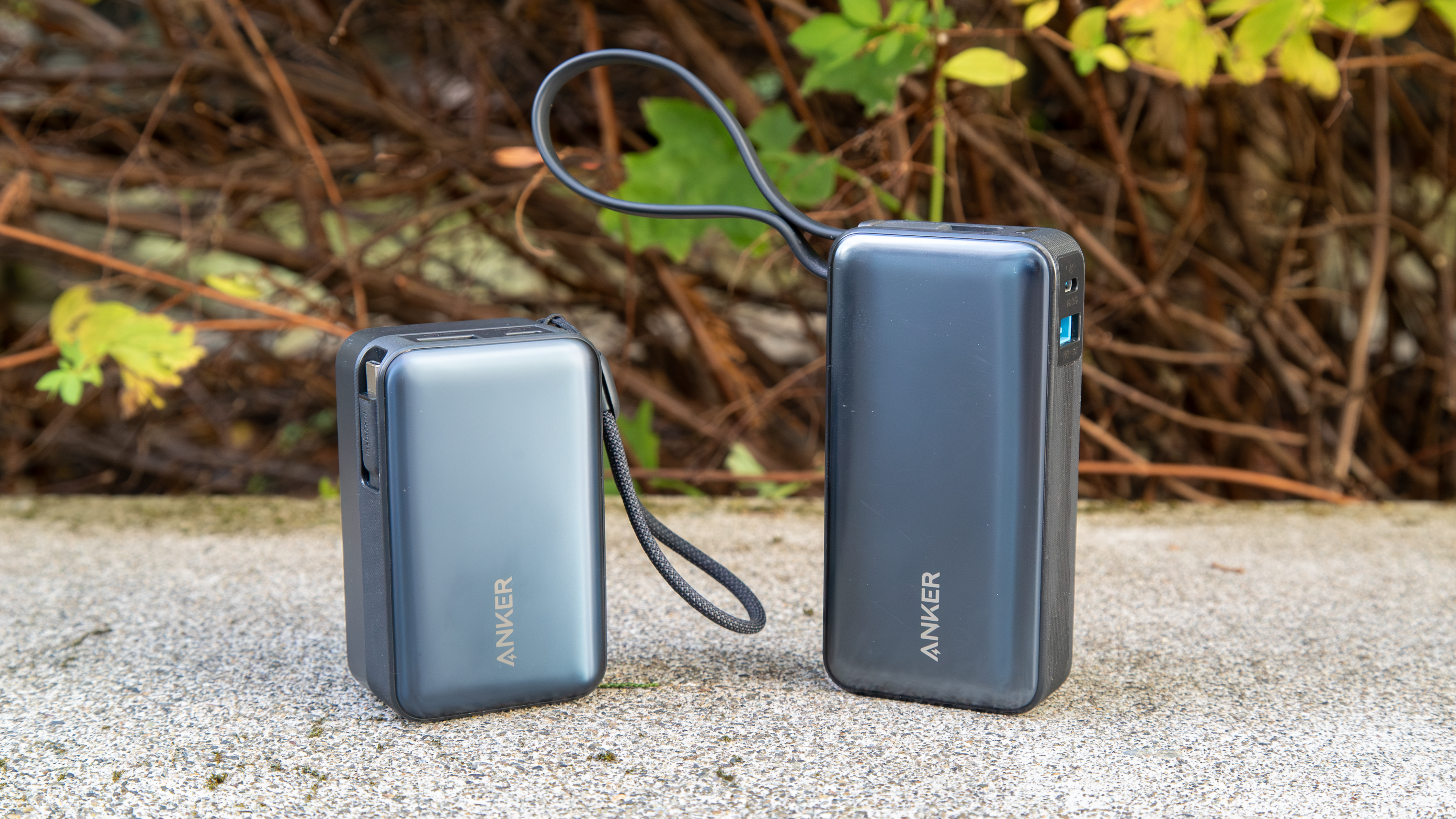'The equation has changed': Qualcomm explains why the Snapdragon 8 Elite doesn't need efficiency cores
Qualcomm engineers also explained why your phone battery isn't lasting longer when their CPUs keep getting more efficient every year.

The Snapdragon 8 Elite is Qualcomm's coming-out party for custom Oryon silicon in smartphones and its sophomore effort with a major AI focus. But something that I think "normal" phone buyers will care about, even more than benchmarks and GenAI tricks, is whether the Elite's 44% efficiency boost will actually make their phone batteries last longer.
It's a fair question because the Snapdragon 8 Elite is the first flagship chip we know of that completely abandons traditional efficiency cores.
Up until now, Snapdragon, MediaTek Dimensity, Samsung Exynos, Google Tensor, and even Apple Bionic SoCs have used efficiency cores — typically 3–4 clocked around 2GHz. Qualcomm stuck six 3.53GHz Oryon cores into the Snapdragon 8 Elite instead. I naturally wondered how this would impact battery life and if other brands still use efficiency cores for a reason.
While attending the Snapdragon Summit in Maui, I took a layman's approach and asked several Snapdragon product team members (A) why phones don't seem to get more efficient every year to match their CPUs and (B) why the Snapdragon 8 Elite doesn't need efficiency cores. I got some very illuminating answers.
Your phone's 'efficiency' and Snapdragon's 'efficiency' are two different things
Apple, MediaTek, and Samsung have slowly made their efficiency cores more powerful year over year. The new Dimensity 9400 boosted its "premium-efficiency" Cortex-A720 cores from 2GHz to 2.4GHz, a significant gap, but still far from traditional performance cores.
Then you have the Snapdragon 8 Elite, which is 44% better for power efficiency than the Snapdragon 8 Gen 3. In practice, the new Xiaomi 15 coming in late October is reportedly 29.7% more efficient and runs 3ºC cooler than the Xiaomi 14, thanks to the 8 Elite.
Promising, right? But look back at past keynotes, and you'll see that the Gen 3 was 20% more efficient than the Gen 2...which was 40% more efficient than the Gen 1 CPU, which in turn beat the Snapdragon 888 by 30%.
Get the latest news from Android Central, your trusted companion in the world of Android
The same applies to GPU gains: You saw a 45% boost from Gen 1 to 2, 25% from Gen 2 to 3, and now 40% from Gen 3 to Elite. The 8 Elite's camera ISP is 25% more efficient than last year and the NPU is 45% more power efficient for AI tasks.
Shouldn't all this efficiency translate into a phone that lasts significantly longer? Not necessarily!

Qualcomm, MediaTek, and OEMs judge efficiency by testing how much power the newer SoC uses to hit the old top benchmark of the last-gen chip. It's a legitimate comparison, your new 2025 Android phone won't naturally stop there; it'll hit the new benchmark—maybe 20–40% higher—which naturally requires more power.
The Snapdragon Summit showed off demos with LLM functions, gaming physics engines, and other tech that fully tax the CPU, GPU, and NPU. Although the tech may be more efficient, it'll still be optimized to take the 8 Elite to its power limit.
Everyday tasks will require less battery than before, true. But when I asked a Qualcomm engineer why efficiency gains don't lead to longer smartphone battery life, he emphasized that SoC efficiency can't counterbalance a large, bright, fast-refreshing display, frequent 5G computing in an area with spotty reception, or other battery-killing design choices.
That's why you shouldn't expect the Galaxy S25 or other future Snapdragon 8 Elite phones to have massive battery gains. OEMs will optimize their phones to use that 44% efficiency boost to improve in other areas.
Why 'efficiency' cores are becoming obsolete
Now that we've established that phone battery life is more complicated than simply making the SoC more efficient, should we be worried that Qualcomm abandoned its efficiency cores? Will its six cores clocked to 3.53GHz do as well as 2GHz cores for handling low-demand tasks, or would they naturally burn more battery?
At breakfast, before the Snapdragon Summit keynote, Shahin Farahani, senior product manager for the Snapdragon 8 Elite, happened to sit at my table. So, I took advantage and asked these questions.
Farahani explained that their previous flagship SoCs had already begun to cut down on efficiency cores—only two in the Gen 3, for instance—but that the shift to Oryon made it possible to cut them entirely because when they graphed their 3.53GHz cores against Arm efficiency cores for low-power tasks, Oryon did "equally" well with no loss of power.
He pushed back against the usual performance/efficiency binary, saying that the Snapdragon 8 Elite performance cores set for low-power tasks could be called efficiency cores but that it would make people assume they were "weak." He preferred calling the old cores "silver" quality and the new ones "gold" quality, or simply "mid-range" and "large" cores instead of performance and prime.

Then I sat down for a small media Q&A on the new Snapdragon 8 Elite CPU with Qualcomm Senior Director Karl Whealton and asked about its lack of efficiency cores one more time for good measure.
At first, he focused on the technical side of things, bringing up the concepts of out-of-order execution and speculative execution when discussing the cost-benefit of performance cores over efficiency cores.
Essentially, swapping in a performance core requires an increase in area, wire length, power consumption, and leakage, as well as an increase in speculative waste. They had to "make sure" that the trade-offs justified the performance gains. And that wasn't always true since "it's so unusual you can actually force eight instructions through in a single cycle." That's why it made sense to keep using a few efficiency cores instead of superfluous, wasteful performance cores.
So what changed?
"It turns out that if you can lower the voltage to minimize energy consumption per operation...higher performance was getting to be more and more worth it," Whealton explained.
"A performance core operating at a lower voltage—or sometimes even duty cycling to turn off the core completely—that started to get more efficient than the smaller cores."
It basically reiterated Farahani's earlier point: Oryon cores at low voltage are just as efficient as efficiency cores or can simply be turned off if unneeded but can also boost to higher clock speeds in a pinch. The "equation around [efficiency cores'] utility had changed," Whealton said.
We'll have to wait and test phones like the Honor Magic 7 and ROG Phone 9 to see if the Snapdragon 8 Elite lives up to Qualcomm's lofty claims, both for power and efficiency. It could be that Oryon silicon has issues we don't know about yet.
But I assume Qualcomm wouldn't ditch efficiency cores unless it could be certain the new architecture wouldn't backfire on them. And Whealton said during our Q&A that "across the industry, other people are starting to drop them out." He likely referenced the Dimensity 9300, which dropped small efficiency cores for larger efficiency cores — though still efficiency cores in the traditional low-clocked sense.
Even if it takes MediaTek and Samsung longer to phase efficiency cores out fully, they'll probably follow in Qualcomm's footsteps and abolish the idea of needing efficiency cores to be efficient.
Hopefully, that'll mean more powerful Android phones across brands in the future—even if we'll have to keep waiting for longer-lasting Android phones.

Michael is Android Central's resident expert on wearables and fitness. Before joining Android Central, he freelanced for years at Techradar, Wareable, Windows Central, and Digital Trends. Channeling his love of running, he established himself as an expert on fitness watches, testing and reviewing models from Garmin, Fitbit, Samsung, Apple, COROS, Polar, Amazfit, Suunto, and more.
You must confirm your public display name before commenting
Please logout and then login again, you will then be prompted to enter your display name.
